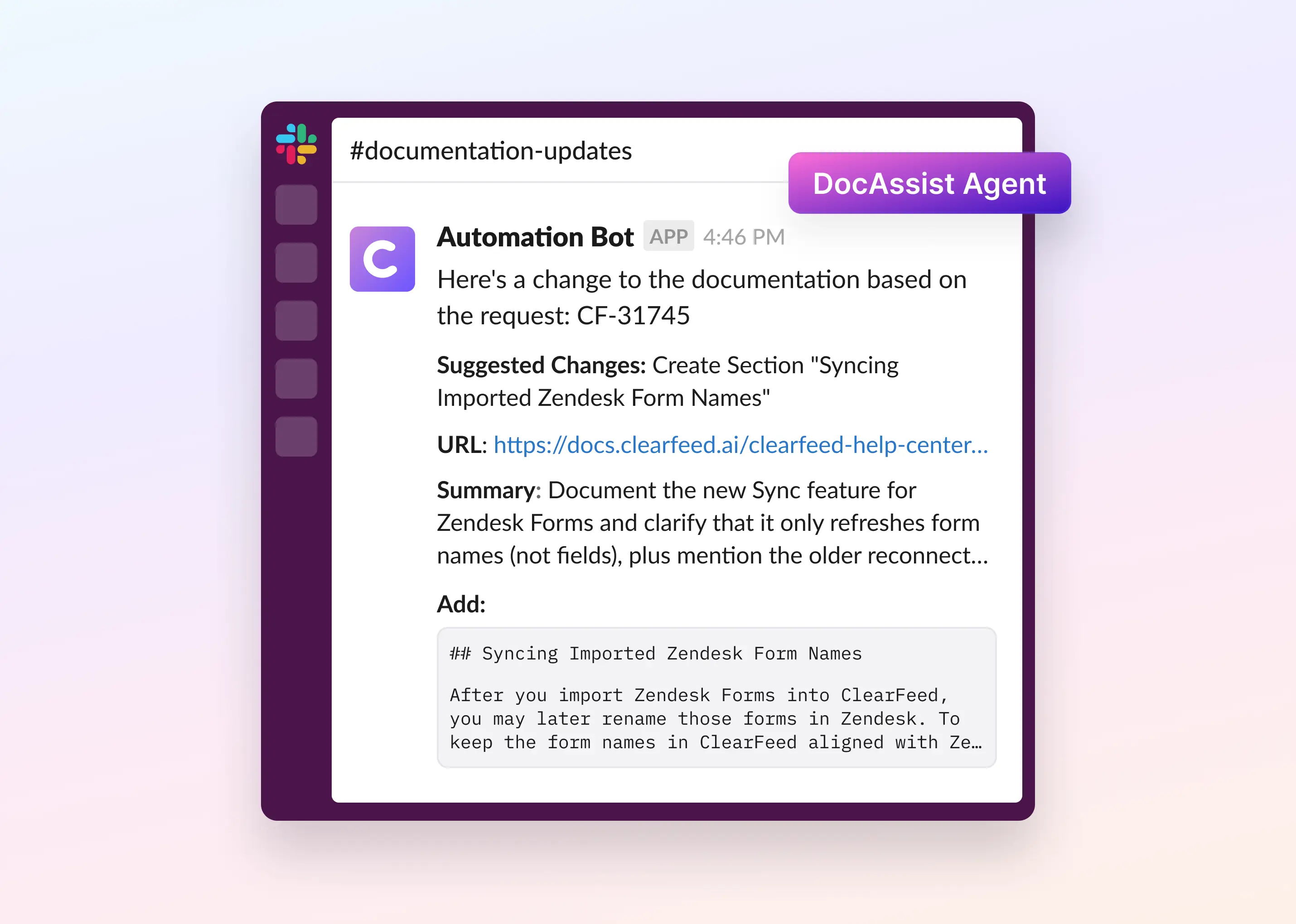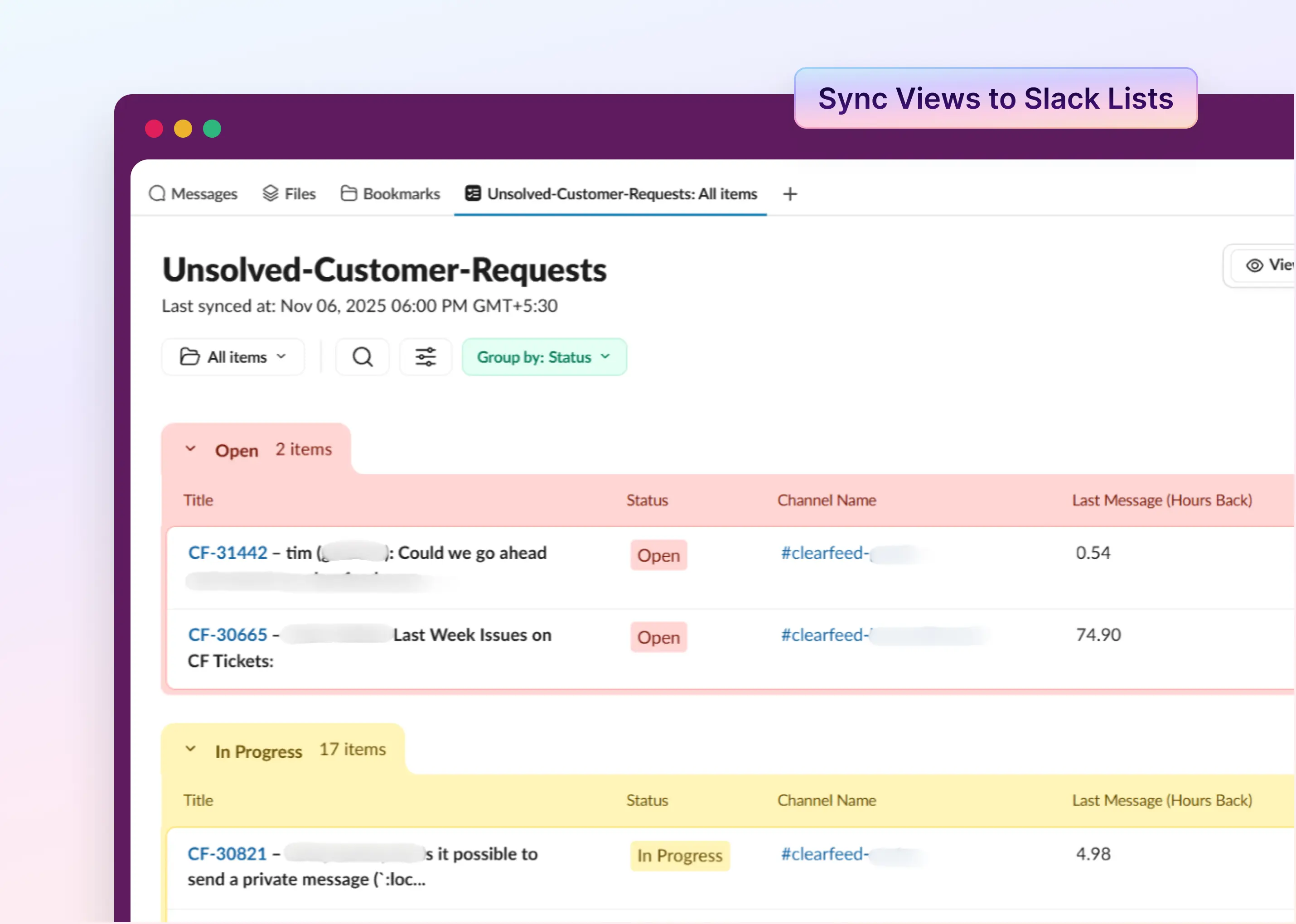When your support team uses Microsoft Teams but your customers prefer Slack, or vice versa, communication becomes fragmented. You find yourself constantly switching between apps, relaying messages manually, and inevitably missing essential conversations. As days pass, finding specific information across both platforms becomes increasingly frustrating.
What if you could make Teams and Slack talk to each other automatically? What if team members could stay in their preferred platform while still seeing all messages from the other system in real time?
This guide will show you exactly how to bridge these two powerful communication tools, creating a seamless workflow that respects everyone's preferences while keeping information flowing freely.
How Do I Connect Slack and Microsoft Teams?
When you want to connect Slack and Microsoft Teams, you can choose from different ways to do it. Each option has its own features, setup requirements, and limitations. Let me explain the primary methods and outline what each is good at and where it might fall short.
Tip: The Microsoft Teams Calls app for Slack lets you integrate both platforms and start and join Teams video calls right from Slack. You can type/teams-calls in any Slack channel or direct message to begin a Teams call, and you’ll be able to see who’s participating and when the call starts before joining. Also, you can join Teams meetings directly from Slack calendar reminders, especially if you use Outlook or Google Calendar.
1. Using ClearFeed
ClearFeed acts as an intermediary, connecting Slack and Teams. With ClearFeed's Slack-Teams integration, you can simplify how you support customers across both platforms, without the hassle of switching back and forth. Here’s what you can do:
- Stay in Slack: You get to manage all your conversations and customer requests on MS Teams directly from Slack and reduce jumping between the two apps.
- Real-Time Bidirectional Sync: Your messages and attachments are synced instantly between MS Teams and Slack. So, when a customer messages you on Teams, it'll pop up right away in Slack, and your reply from Slack will go back to Teams just as fast.
- Triage Channels: All customer requests from MS Teams are routed to a single Triage Channel in Slack. It makes it super easy to assign, track, and respond to issues from one place while keeping your customers on MS Teams up to date, too.
- Consistent Updates: If you edit or delete a message in Slack, the change is automatically reflected in MS Teams, and vice versa. Thus, everyone stays on the same page.
And there are some cool features on the horizon:
- Automation: Streamline your workflows with automated actions.
- Welcome Messages: Send customized welcome messages to users.
- GPT-powered Answers: Use AI to answer common questions.
- CSAT Tracking: Measure customer satisfaction without leaving Slack.
- SLA Management: Track response times and ensure you meet SLAs.
- Analytics: Get detailed metrics and analytics through a friendly web dashboard.
Pros:
- Relatively straightforward setup with minimal technical expertise required
- Managed service means fewer internal resources needed for maintenance
- Offer web app interfaces for configuring channel mappings and message rules
2. Custom API Integration
If you have an in-house technical team, you can build custom integrations using the official APIs provided by both Slack and Microsoft Teams.
How it works: Developers create applications that connect to both platforms' APIs and implement logic to synchronize messages, user statuses, and files between the two systems. This typically involves setting up webhook endpoints, managing authentication tokens, and building transformation logic.
Pros:
- Complete customization based on specific organizational needs
- No recurring subscription costs beyond the initial development
- Can be optimized for your particular usage patterns and priorities
- Keeps data flow within your infrastructure
- No artificial limitations on message volume or frequency
Cons:
- Requires significant development resources and expertise
- Ongoing maintenance responsibility falls on internal teams
- API changes in either platform may require integration updates
- Complex to implement advanced features like threading and reactions
- Security implementation and compliance verification fall to your organization
3. Webhook-Based Integration
A simpler form of custom integration that focuses specifically on forwarding messages between platforms using webhooks.
How it works: Incoming webhooks are configured in both platforms, and a lightweight application or service routes messages between them. When a message is posted in a Slack channel, a webhook sends it to your service, which then forwards it to the appropriate Teams channel via Teams' webhook, or vice versa.
Pros:
- Simpler to implement than full API integration
- Minimal ongoing maintenance required
- Lower development costs
- Focuses on the core need of message synchronization
- Can be implemented with serverless functions for cost efficiency
Cons:
- Limited to basic message forwarding
- Typically doesn't support rich formatting, reactions, or threading
- Doesn't handle file transfers well
- User identity management can be challenging
- No built-in support for editing or deleting messages across platforms
What’s the Best Teams-Slack Integration?
The best integration approach depends on several organizational factors:
- Technical resources available: If you have a strong development team, you may benefit from custom API integration; if you have limited technical resources, you may prefer third-party platforms.
- Integration depth required: Third-party platform or custom API integration is necessary for comprehensive features such as threading, reactions, and file sharing. For simple notifications, webhook approaches might suffice.
- Security requirements: Companies with strict rules about where their data can be stored and processed may want to build their integration system. This way, they can ensure all communication data stays within their networks and servers rather than flowing through third-party systems.
- Budget constraints: Third-party integrations typically involve subscription costs that scale with usage, while custom development has higher upfront costs but potentially lower ongoing expenses.
- Timeline considerations: Third-party platforms can be implemented in days or weeks, while custom integrations might take months to develop and test.
When considering these methods, consider not only how your organization communicates now but also how it might change in the future. A technique that works well today might not be enough as your team starts working together in new ways or as your organization grows. In the long run, the best choice will be a flexible integration strategy that can adjust to future changes.
Bringing Slack and MS Teams All Together
Connecting Microsoft Teams to Slack doesn't have to be complicated. Whether you choose a ready-made solution like ClearFeed, build your own integration, or set up simple webhooks, the goal remains the same. You are creating a unified communication experience that works for everyone.
Think about what matters most to your team. Do you need a quick solution that works right away? Are you concerned about keeping sensitive conversations within your systems? Or are you looking for something that can grow and change as your organization evolves?
By bridging these platforms, you are not just connecting software. You are connecting people. Team members can stay in their comfort zone while still being part of every important conversation. Customers receive consistent support regardless of which platform they prefer. And you can focus on what matters, rather than managing multiple apps.
Can you tell me how seamless integration works for your specific situation? ClearFeed offers a demo that shows precisely how your Teams and Slack environments can work together.
Frequently Asked Questions
1. Can You Integrate Microsoft Teams With Slack?
Integrate Microsoft Teams with Slack using third-party tools like ClearFeed. These tools create a real-time, two-way sync between both platforms, allowing messages and updates to flow seamlessly. This eliminates the need to switch platforms during collaboration.
2. Why Would I Want To Connect Slack and Microsoft Teams?
Connect Slack and Microsoft Teams to reduce context switching, centralize conversations, improve response times, and maintain channel visibility. Use tools like ClearFeed to support teams working across platforms.
3. How Do I Integrate Microsoft Teams With Slack?
Integrate Microsoft Teams with Slack by using a tool like ClearFeed. Connect both workspaces via OAuth, choose the channels to sync, and configure message and notification settings. Once set up, messages flow automatically between Teams and Slack without manual switching.
4. Can I Bridge Messages Between Slack and Teams in Real Time?
Bridge messages between Slack and Microsoft Teams in real time using ClearFeed. It enables bi-directional syncing of messages, attachments, and threaded replies, ensuring both platforms display the same conversation instantly without delay.
5. Can I Use Microsoft’s or Slack’s Native Connectors for Integration?
Microsoft’s and Slack’s native connectors only support basic notifications, not two-way conversations. To achieve full cross-platform integration, use a third-party tool such as ClearFeed, which enables message mirroring, thread syncing, and multi-channel mapping.
6. Is It Safe To Connect Slack With Microsoft Teams?
Connecting Slack with Microsoft Teams is safe when using trusted tools like ClearFeed. These platforms use enterprise-grade authentication, encryption, and access controls. Admins can manage permissions, control channel access, and set data retention policies across both platforms.
7. Can I Connect Multiple Slack and Teams Channels?
Connect multiple Slack and Teams channels using ClearFeed. It allows mapping several Slack channels to one or more Teams channels based on your workflow. This setup supports triage, client escalations, and internal collaboration across platforms.
8. Can I Automate Support Workflows Between Slack and Teams?
Automate support workflows between Slack and Teams using ClearFeed. It enables triaging requests, managing SLAs, and syncing ticket updates across channels. This supports hybrid support teams and cross-organization collaboration.
9. How Much Does It Cost To Integrate Slack With Teams?
The cost to integrate Slack with Teams depends on the integration platform, user count, and channel volume. ClearFeed offers custom pricing based on organizational needs. You can explore their pricing plans or request a demo for specific cost details.

















